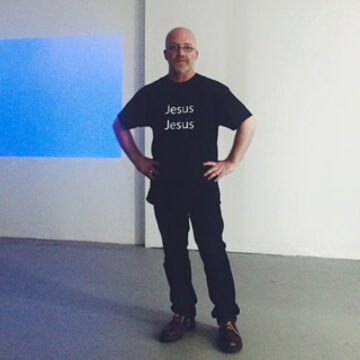

Mathew Wilson
Lecturer
Contact
Bio
BFA, 1990 Hull College of Art, England; MFA 1994, School of the Art Institute, Chicago. Exhibitions: Museum of Contemporary Art, Chicago; Art Institute of Chicago; Museum of Contemporary Art, Los Angeles; Rhona Hoffman Gallery, Chicago; Renaissance Society, University of Chicago; Chicago Cultural Center. Bibliography: Catalogue, Sic Transit Gloria Mundi. Collections: Gabriel Mayer, Munich, Germany; Aaron Levine, Washington, D. C.; Museum of Contemporary Photography, Chicago; Victoria and Steven Burns, Los Angeles, California. Awards: Community Arts Assistance Grant; Illinois Arts Council New Performance Forms Artist Fellowship; Illinois Arts Council, Artist Projects Grant; Illinois Humanities Council.
Personal Statement
Industry of the Ordinary (IOTO) created their first project for Patriot's Day in 2003, where we organized nearly 100 volunteers to drop white clothing on Daley Plaza in Chicago. It was intended that the combined weight of this clothing would match the average weight of an adult American. The work was political in intent, firstly to draw attention to the fiction of truly public space in the city and, for Patriot's Day, to ritualistically drop an 'American Body' to the ground.The project has now grown to include work that addresses a variety of subjects in a wide range of media. In addition to publicly sited performance works IOTO create installations sculpture, text, photography, video, and sound pieces that are dedicated to an exploration and celebration of the customary, the everyday, and the usual.